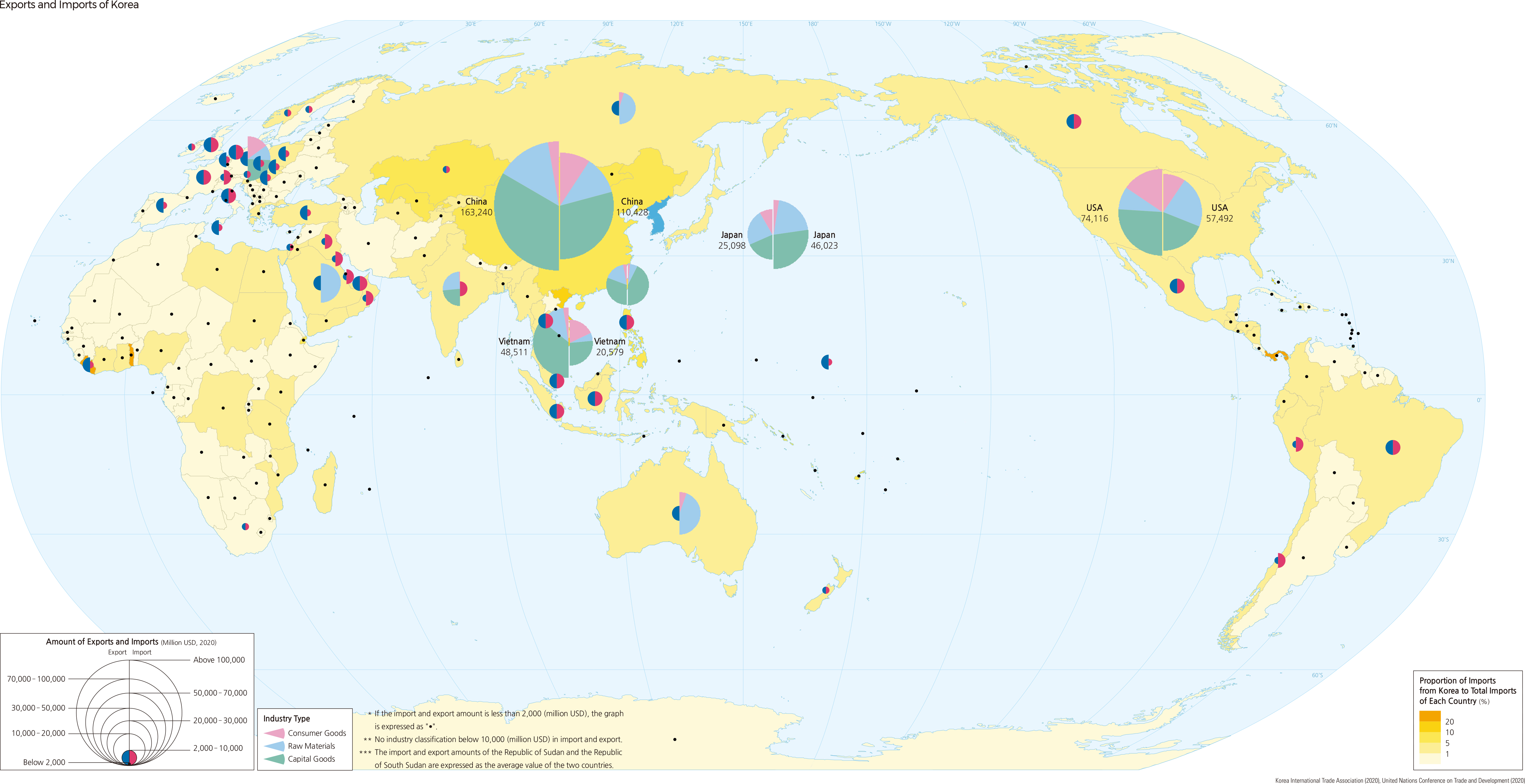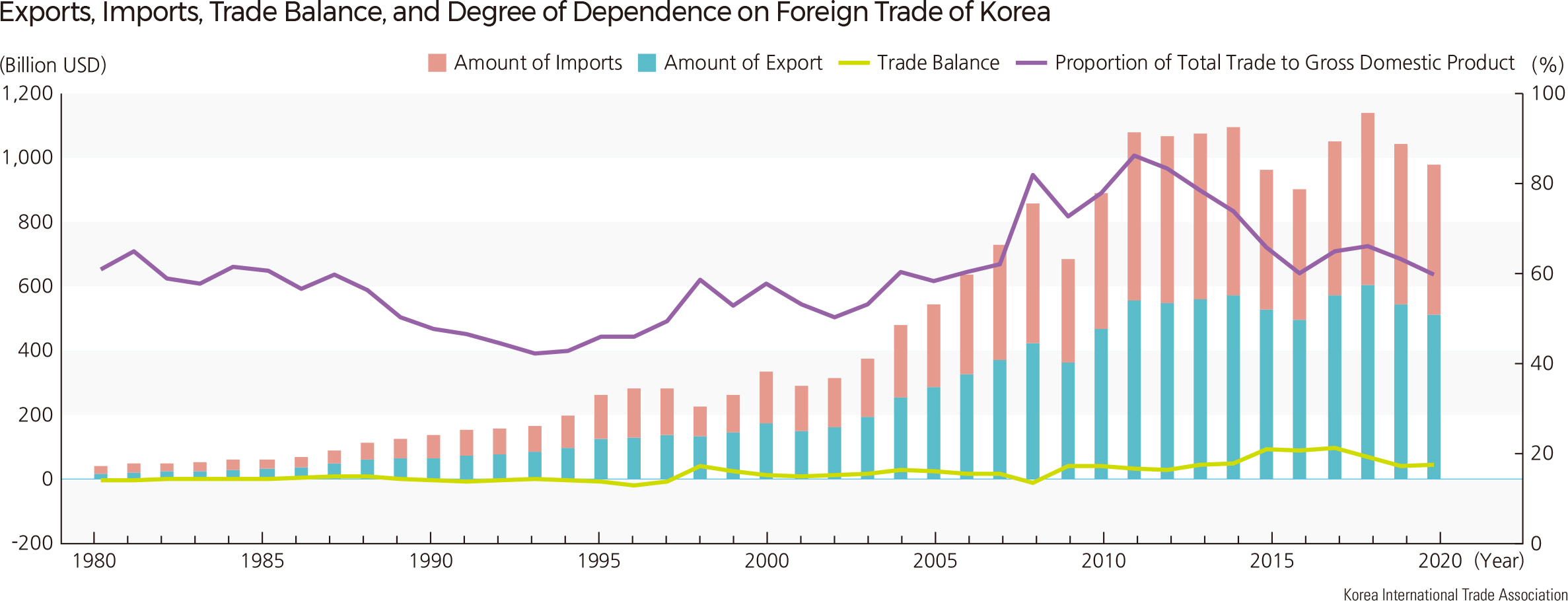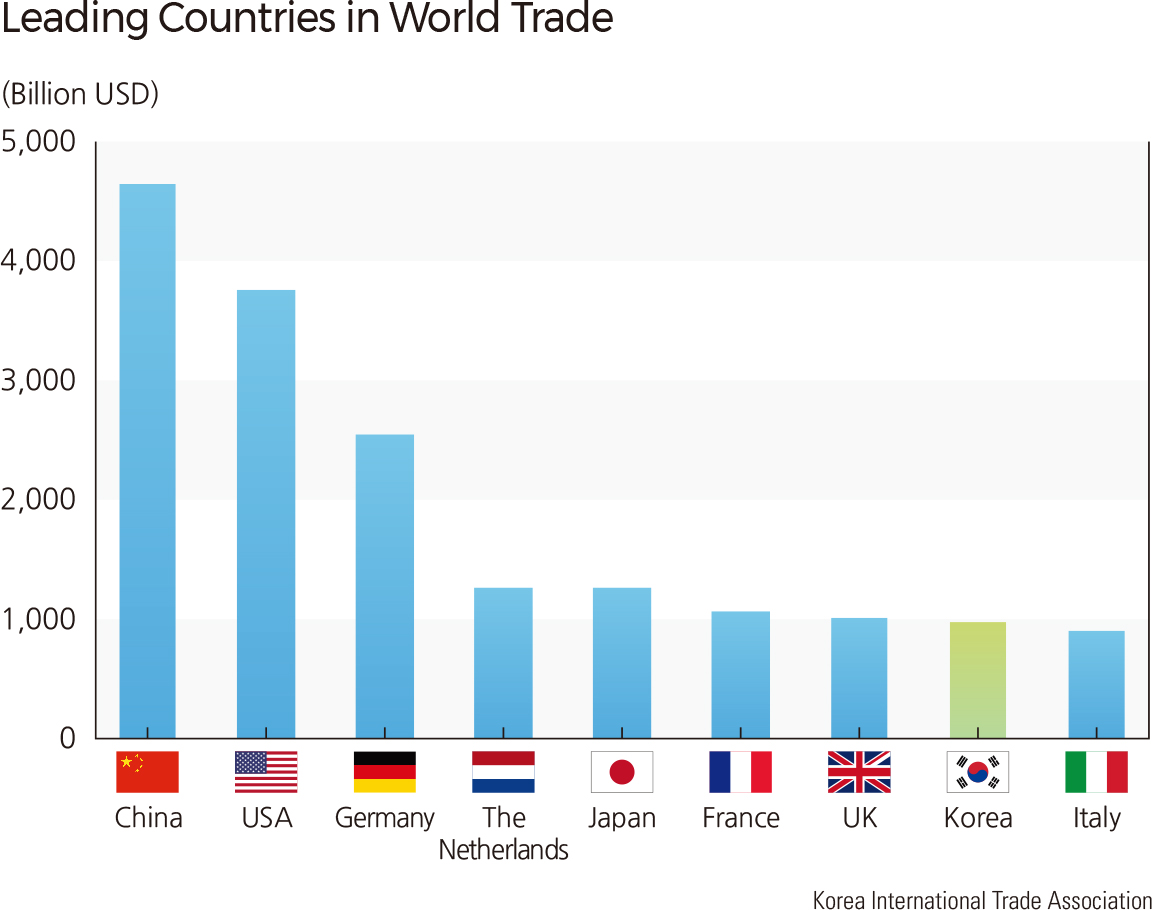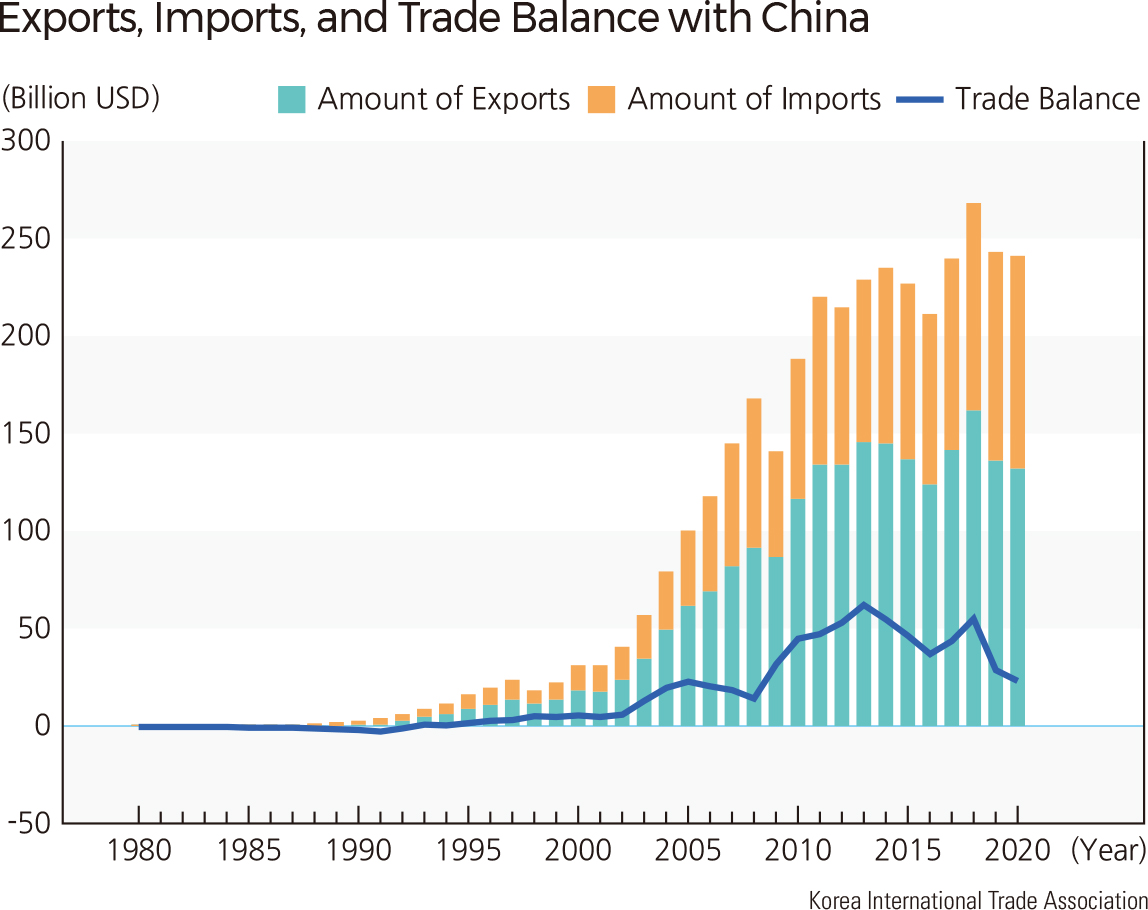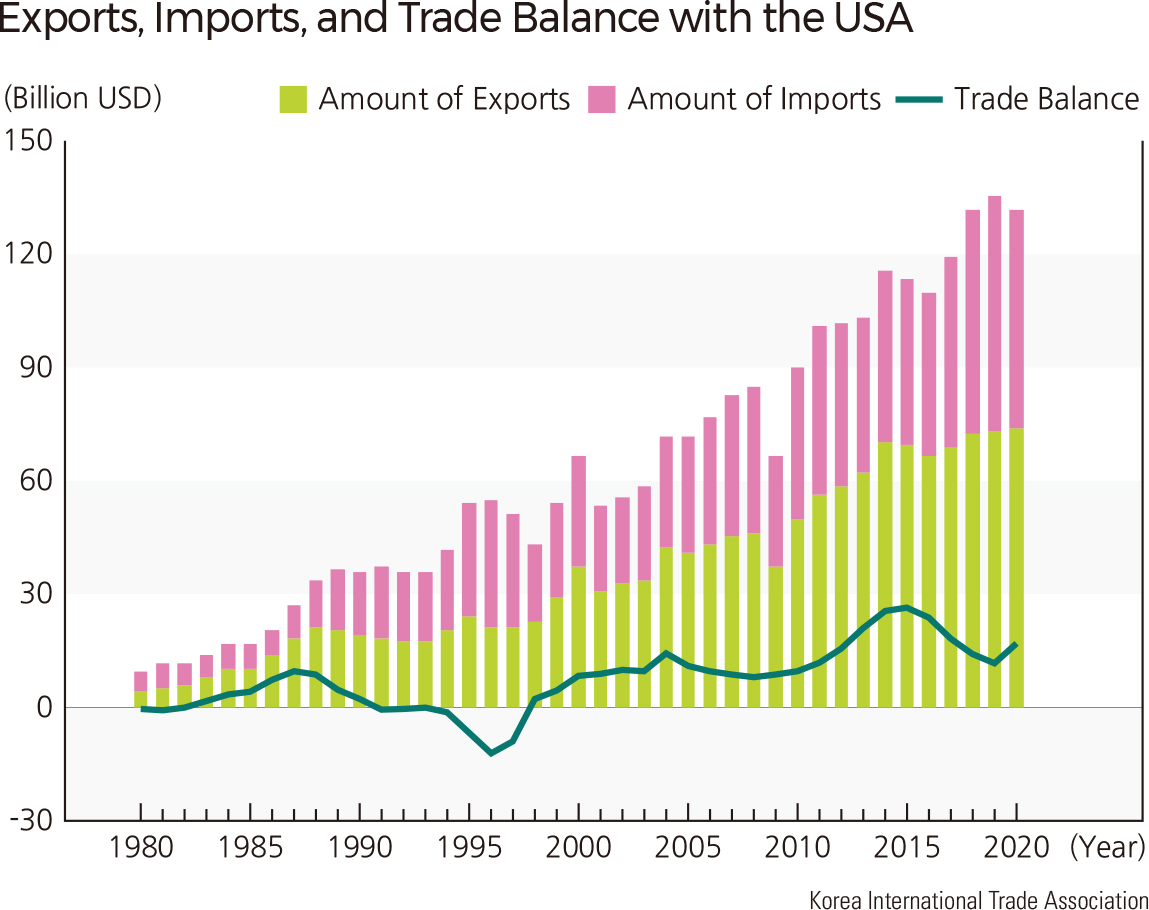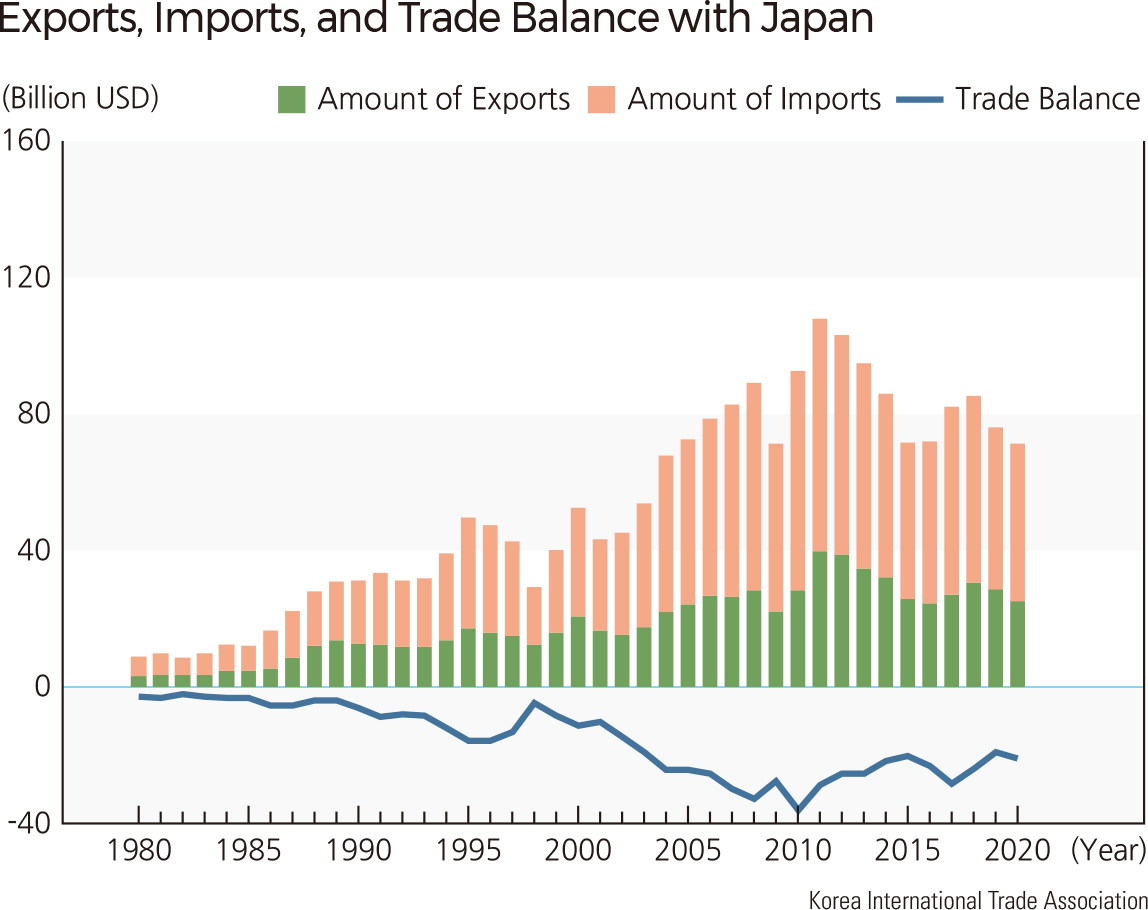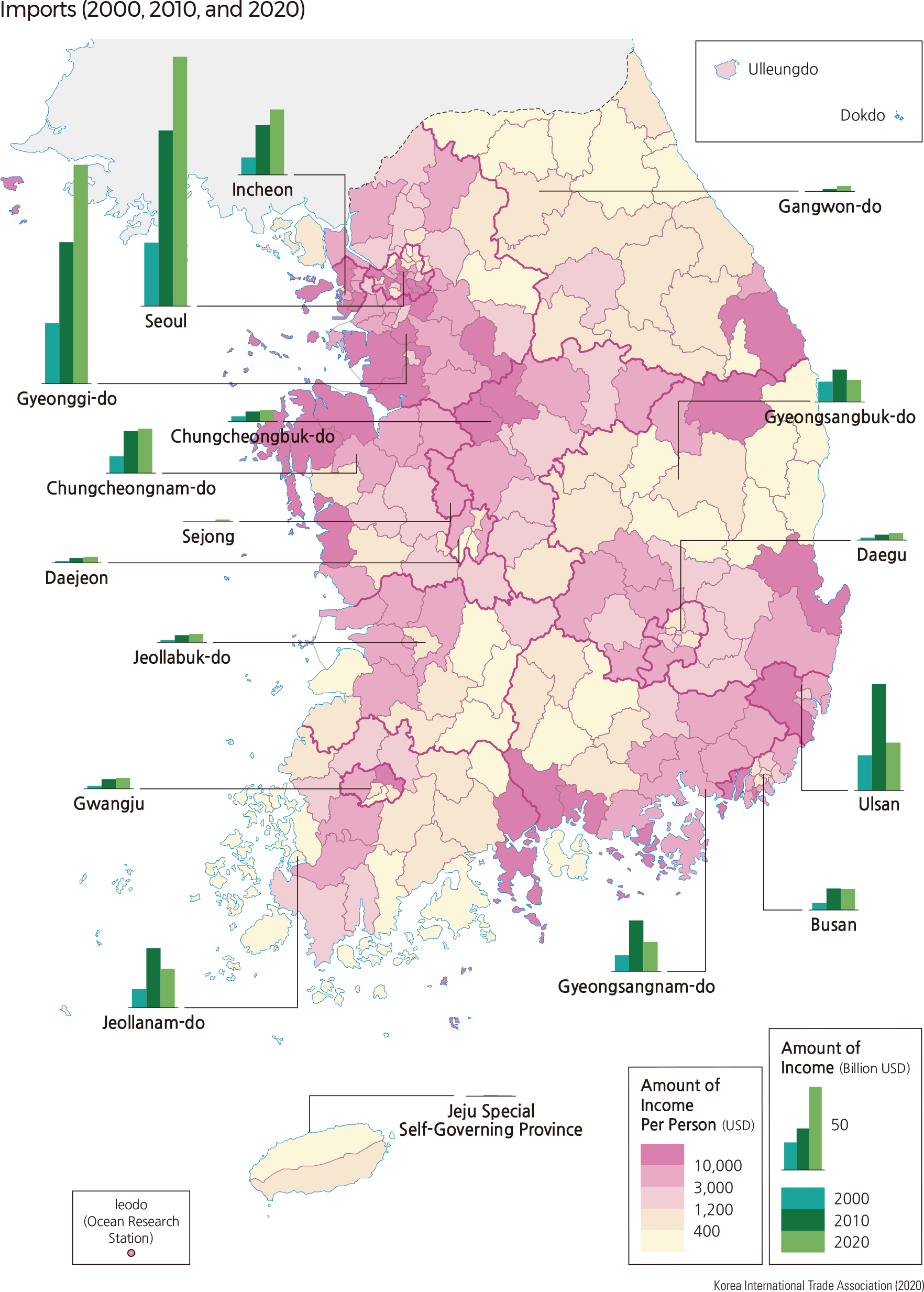English III 2021
Since the 1960s, the rapid growth of international trade has played a crucial role in the economic growth of Korea. By 2011, the country’s international trade volume had exceeded 1 trillion USD, and in 2018, it reached 1.1401 trillion USD. However, it declined to 980.1 billion USD (export: 512.4 billion USD, import: 467.6 billion USD) in 2020 due to Covid-19. In particular, the foreign trade dependency initiated by the export-led growth strategy of the 1960s maintained a steady increase (to 40%) through the mid to late 1990s and continued to increase to 86.1% by 2011. But it has significantly decreased thanks to the growth in the domestic market, accounting for 59.8% in 2020. What is noticeable here is that the decrease in the foreign trade dependency after 2019 comes from the deterioration of exports due to Covid-19. In terms of international trading, the highest volume of exports was to China, followed by the United States, Japan, and Vietnam. Meanwhile, China was also the country from which Korea received the most imports, followed by the United States, Japan, Germany, and Vietnam. In particular, China has been Korea’s most important trading partner since 2007. The analyses of international trading activities by region reveal that Gyeonggi-do (22.5%) had the most export volume in 2020, followed by Chungcheongnam-do (15.5%), Ulsan (10.9%), Seoul (10.4%), and Incheon (7.4%). On the other hand, Seoul (31.6%) had the most import volume in 2020, followed by Gyeonggi-do (27.7%), Incheon (8.3%), Ulsan (6.0%), and Chungcheongnam-do (5.7%). The highest per capita export volume in US dollars was from Asan (186,636 USD), followed by Buk-gu in Ulsan (88,724 USD), Jung-gu in Incheon (86,031 USD), Namdong-gu in Incheon (80,845 USD), Icheon in Gyeonggi-do (74,732 USD), and Ulju-gun in Ulsan (74,216 USD). On the other hand, the highest per capital import in US dollars was to Jung-gu in Seoul at 140,990 USD, followed by Jongno-gu in Seoul (138,475 USD), Ulju-gun in Ulsan (100,212 USD), Namdong-gu in Incheon (80,386 USD), and Seosan in Chungcheongnam-do (77,266 USD). |
